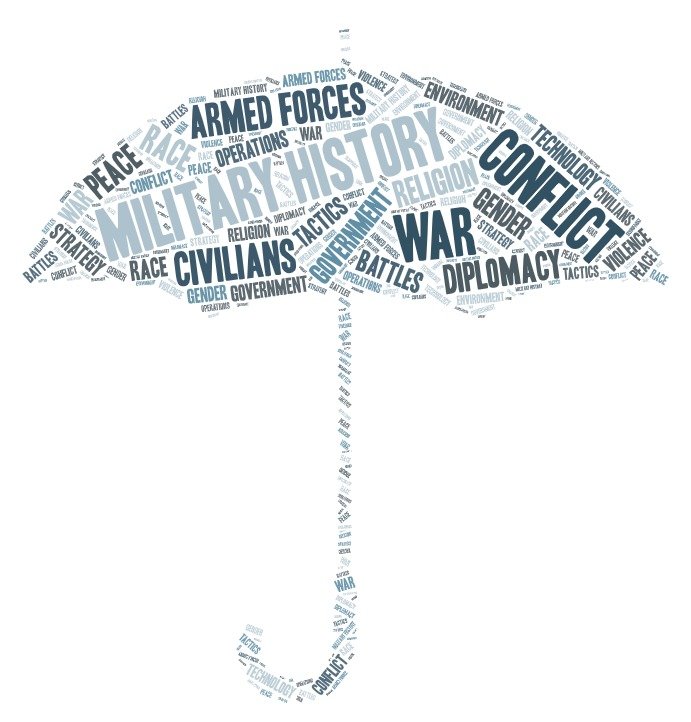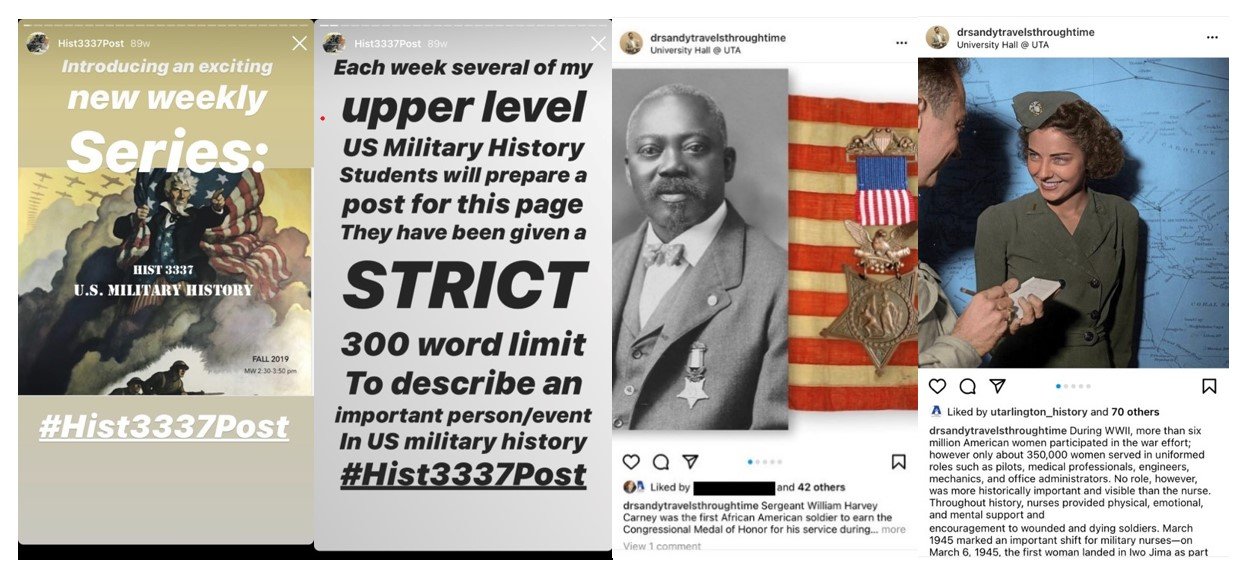
Historical Gaming and Extracurricular Learning
More than twenty years ago I introduced students to historical wargaming. It was a hobby I had been immersed in since youth. And although it was not a gateway to appreciate history, it did serve as a means of reinforcing my fascination with it. At the time, it seemed to me that, the rise of computer gaming since the early 1990s and its supplanting of boardgames was both a blessing and a curse. It had led to a rapid decline in student interest in traditional games, but at the same time had expanded the audience for gaming through technology. What computer games did not do, however, was provide a physical aesthetic to historical games. I believed that students would appreciate and benefit from an introduction to traditional board wargames and miniature gaming.
Identify it, Define it, Do it: Military History and the AP US History Class
“The College Board doesn’t care about military history.” I emphasize this point each year, to my Accelerated US History students, most of whom will go on to take the AP US History exam. But I say this somewhat tongue in cheek. After all, what I – and historians – consider military history often isn’t what my students think it is.
History surveys, especially the AP US History course, don’t have much room for comprehensive coverage of operational, grand strategy military history, or social histories of the military, but they have plenty of room for military history as examples of larger processes.
The Last PowerPoint: Teaching World War II with the Holocaust
It’s the end of the unit on World War II. A slide with a bar graph or chart with the clear title, “World War II Deaths,” illuminates the darkened room. Color-coded bars mark out “civilian” and “military” deaths by country. There’s the Soviet Union with its civilian bar stretching all the way past 20 million, China falling just short of that, Germany at about eight million killed, Poland with five or six million, and so on. Or perhaps it’s organized by “Casualties as Percentage of 1939 Population,” with smaller nations, like Yugoslavia, Hungary, Lithuania, and Latvia all showing a loss of more than 5% of their pre-war populations. Maybe there’s an asterisked footnote indicating that some of those deaths were victims of the Holocaust, but that’s a discussion for a different lesson or different unit or perhaps not a subject of discussion at all.
Gettysburg in Texas: The Challenges and Rewards of Teaching Military History Beyond the Battlefield
By now, you’ve read Rick Herrera’s essay on the great pedagogical benefits of the staff ride, and you’re probably dying to add it to your teaching toolbox, but maybe, you live too far from battlefields and your students can’t afford to travel there? Luckily, that doesn’t mean that you need to give up on teaching battlefields altogether, nor that you cannot integrate many elements of the staff ride into your course. In this essay, Cecily Zander explains how she overcame the challenges of teaching the battle of Gettysburg without her students ever leaving Texas.
Teaching World Military History: Some Reflections
Like many military historians, I was trained in graduate school via the “western” military history model, with a heavy dash of American history. That’s what I TA’d and taught at Duke, and also for my six years as an assistant professor at the University of Louisville. While I was there, however, Mark Grimsley at The Ohio State University hosted a weekend conference on “Teaching World Military History,” partly in recognition of the then newly released Christon I. Archer, John R. Ferris, Holger H. Herwig, and Timothy H. E. Travers, World History of Warfare (Nebraska, 2002). I eagerly drove up to Columbus (I think I stayed in a campground that weekend) to learn more. I was looking for a way to get beyond the western narrative: Ancient Near East (optional), Greece, Rome, Medieval, Military Revolution, Warring States Europe, Industrialization, World Wars, and Other Western Wars.
Interviewing Veterans: A High School’s Oral History Project
During my first year as a teacher of AP US History, I hosted what turned out to be a dismal assembly about veteran experiences. I had asked five local veterans to sit on a stage to share brief stories while one hundred students stared forward from a distance in the auditorium. Each veteran may have had twenty minutes to summarize their entire military experience. The disconnect between speakers and audience was clear, as was the lack of depth in what was being shared. There had to be a better way to connect students with the veteran community.

Drawing Back the Curtain, Part II: Yep, You Really Do Teach Military History
This article is aimed at the secondary teachers in the audience, those who labor in the educational trenches daily, wrestling with impossibly expansive curricula, impossibly diverse learning needs, and impossibly high expectations from parents, administrators, legislators, and from yourselves. This piece is an acknowledgement that many of you may not think about military history as something you actively “do” in your classes and an admission that none of you need something else to add to your impossible loads.
From the Corps to the Classroom: Teaching History As a Marine Veteran
I find it ironic, looking back on the last 16 years as a teacher and coach, how much being in the Marines became central to my career identity. When I got out, I didn’t wear Marine tee shirts or keep a high and tight. I was proud and enjoyed my service, but I never considered it a large part of me. That chapter closed when I drove off Camp Lejeune in September of ‘98. But it turns out that my military experiences have afforded me a perspective that has become part of my identity as an educator in all sorts of unexpected ways.
Drawing Back the Curtain, Part I: What Academic Historians Should Know About How Military History is Taught at the Secondary Level
I write this article for the academic historians in the audience. It is primarily for those of us who teach the complicated stories we uncover in archives and read in our colleagues’ writings; it’s for those of us who love what we do but who nonetheless find ourselves grumbling under our breaths (or sometimes out loud), “Why don’t our students know this? Why didn’t they learn it in high school?”

Non-Traditional Assignments in Military History Courses
This month’s feature in our Military History and Pedagogy series consists of two essays written by Sarah Myers (Messiah University) and James Sandy (University of Texas at Arlington), who reflect on the ways non-traditional assignments can enhance a military history course.
Not only are such assignments a great way to spark interest in history among students taking a mandatory survey course, as Sandy demonstrates, un-essays can also be an opportunity to introduce undergraduates to digital and public history. Myers uses podcasts and digital museum exhibits—which fit well in both in-person and online classes—to encourage students to develop career-oriented skills. Meanwhile, Sandy relies on social media posts created by students to build connections between his classes and create a vibrant online learning community. Their essays will certainly spark inspiration for your next course and, if you wish to adopt some of their ideas, provide a blueprint.
Teaching Military History: Civilian Higher Ed v. PME
In this podcast, Jacqueline Whitt (Professor of Strategy, Army War College) and Mary Elizabeth Walters (Assistant Professor, Air Command and Staff College) discuss some of the differences between teaching military history at civilian higher ed institutions compared to professional military education (PME). They touch on topics such as teaching traditional military history versus applied military history, the challenges of each world and moving from one to the other, how to reach students coming into the classroom from a wide variety of backgrounds, as well as curriculum development and course structure.

Walking, Talking, Teaching, and Learning: The Staff Ride
Military history’s breadth and depth are expansive, and its practitioners are daily reshaping and increasing its intellectual and pedagogical scope. Our subdiscipline is dynamic and draws upon other fields within history and other disciplines from geography, demography, the sciences, to literature, and more. Military history ranges from traditional operational military history with its focus on strategy, tactics, weapons, geography, doctrine, and the other related elements, to war and society, how war, warfare, and their associated activities affect and are affected by societies. As in all scholarly fields, there is a healthy discussion over the nature and extent of what constitutes military history, and at its best this helps impel the creative, intellectual, and pedagogical processes. Most of us who teach military history do so in the classroom. Ideally, this teaching extends to archival research and introducing students to the processes and craft that underpin history. Colleagues in public history, particularly those who work at battlefield parks and museums or sites like the National Park Service’s Tredegar Iron Works in Richmond, Virginia, teach primarily to the interested public. Like those in the formal academy, public historians are deeply read in the historiography of their subject areas and have spent many hours interrogating the evidence from archival research.